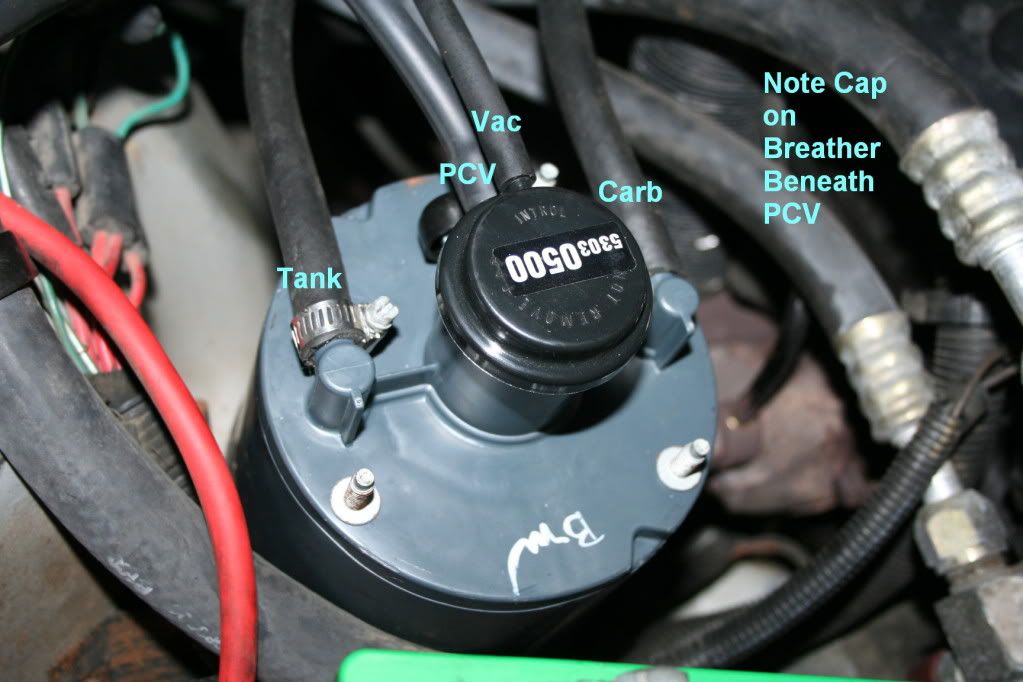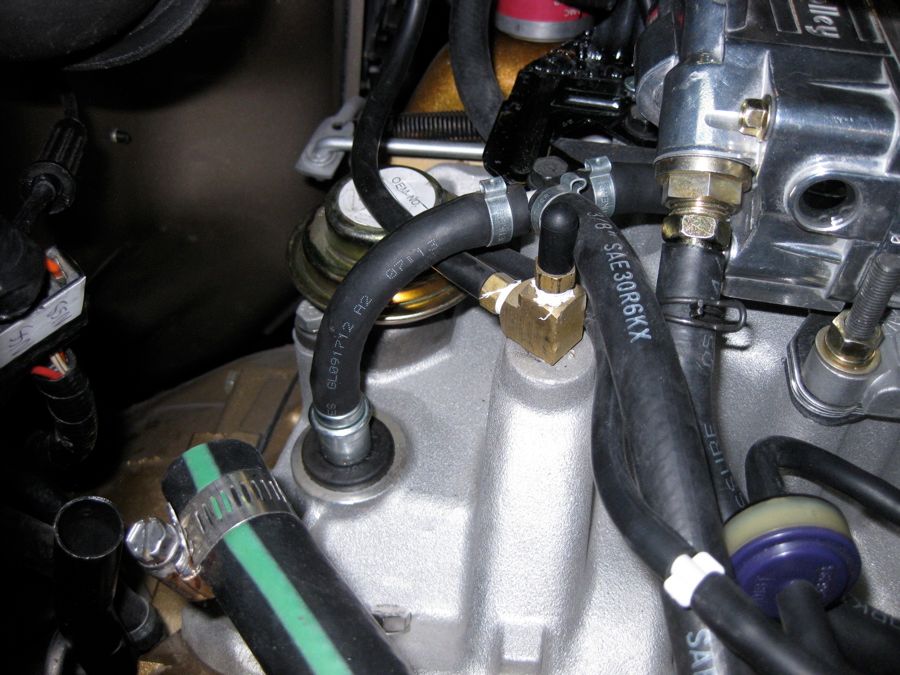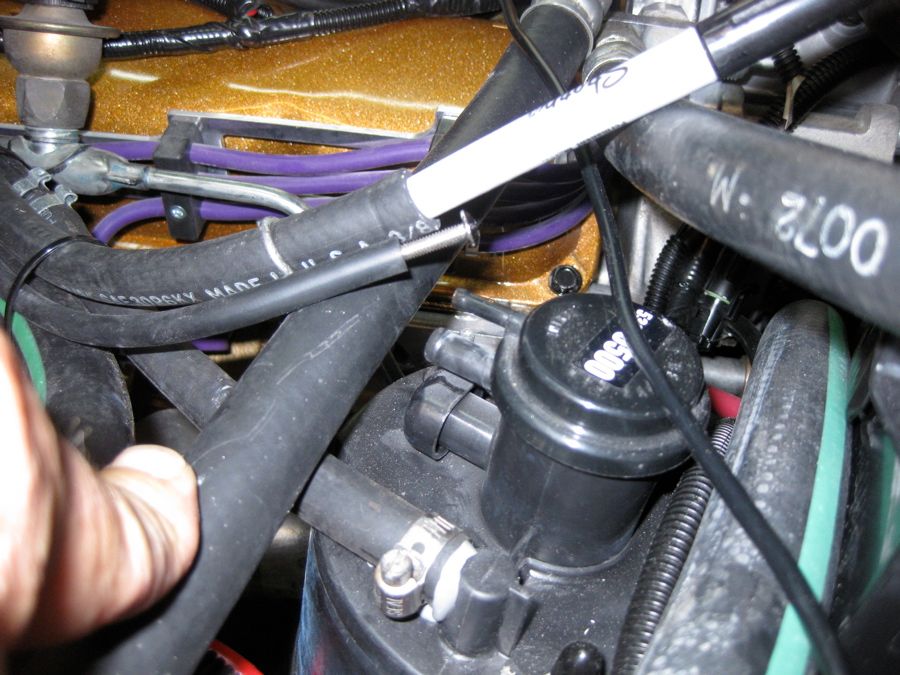Ok, I clearly have an air gap between the set screw and the secondary lever. So that's not it. I screwed it back in till it was just touching the lever.
Timing & advance tuning: Need help
Collapse
X
-
Brad
(*Allowed to post while failed 'I am not a Bot' test results are under appeal)
My build thread: 1982 Cherokee Laredo
Ristow's Bunker
Member, FSJ Prissy Restoration Association
-
-
shine a light through the carb,see if you can see it thru the closed secondaries.Originally posted by HankrodRistows right.................again,
Originally posted by Fasts79Chief... like the little 'you know what's' that you are.
Originally posted by Fasts79ChiefI LOVE how Ristow has stolen my comment about him ... "Quoted" it ... and made himself famous for being an ***hole to people. Hahahahahahahahahha!
It's like you're unraveling a big cable-knit sweater that someone keeps knitting...and knitting...and knitting...and knitting...
Comment
-
-
LOL, just put it back on. Carb removal commencing again.....Brad
(*Allowed to post while failed 'I am not a Bot' test results are under appeal)
My build thread: 1982 Cherokee Laredo
Ristow's Bunker
Member, FSJ Prissy Restoration Association
Comment
-
-
I can see pinholes of light around the outer shaft, and a miniscule little sliver around the butterflies.Brad
(*Allowed to post while failed 'I am not a Bot' test results are under appeal)
My build thread: 1982 Cherokee Laredo
Ristow's Bunker
Member, FSJ Prissy Restoration Association
Comment
-
-
another thing to look at is that the spacer,or gasket used under the carb is not interfering with the links on the ends of the throttle shafts upon installation. i have seen some spacers wide enough to be under the linkage on install. check both ends of both shafts after instal for any interference.
you can start the motor,and gently squeeze the throttle shafts toward idle position and see if the rpms come down substantially.
look down the barrels after install,see if the blades are open more than they were with it off.
that motor should die,or nearly die with the idle screw backed out.Originally posted by HankrodRistows right.................again,
Originally posted by Fasts79Chief... like the little 'you know what's' that you are.
Originally posted by Fasts79ChiefI LOVE how Ristow has stolen my comment about him ... "Quoted" it ... and made himself famous for being an ***hole to people. Hahahahahahahahahha!
It's like you're unraveling a big cable-knit sweater that someone keeps knitting...and knitting...and knitting...and knitting...
Comment
-
-
Ok, Mr Ristow, here's where I think I'm at:
I couldn't find any interference with the insulator plate. (I did have to clearance it for the choke side before this)
I might possibly have found a vacuum leak. It was related to the EGR so you don't wanna know about it. I have to keep this EGR at least until I get my 1st emissions sticker. Then, like Obama said to Putin, I'll have some leeway.
I've got it at 12.5* initial timing, 24* with the vacuum advance, and 38* total @ 2700. It idles at 800, and just doesn't seem to like anything below that. It goes to 600 rpm when I put it in gear. The idle speed screw is definitely in play now.
Anything below 800, and the manifold vacuum bounces pretty good below 10". At 800 it seems pretty steady at 10-11. I'm showing about 5" on the ported gauge at these settings.
I can't manipulate the throttle plate to drop, I'm setting against the idle speed screw.
So what do you think?Brad
(*Allowed to post while failed 'I am not a Bot' test results are under appeal)
My build thread: 1982 Cherokee Laredo
Ristow's Bunker
Member, FSJ Prissy Restoration Association
Comment
-
-
Belay that, still finding issues.Brad
(*Allowed to post while failed 'I am not a Bot' test results are under appeal)
My build thread: 1982 Cherokee Laredo
Ristow's Bunker
Member, FSJ Prissy Restoration Association
Comment
-
-
I've never done this publicly here (although I've said it to myself many times)
Ristow's right, again.
It's a vacuum leak, and it's coming from my charcoal canister. It took me so long to find it because I never figured the canister supplied by ported vacuum would create a manifold vacuum leak. And I didn't think the leak could be coming from there, at all.
It replaced it using this thread as my guide:
So, I got tired of rough idle, questionable acceleration and surging and have investigated the purge valve inside the vapor canister. It looks like swiss cheese so, there's my vacuum leak. You can't find replacement valves for these things so you're stuck with doing one of several things. Putting "shoe goo" on the
(*Again, I have to pass emissions)
So, I hooked it up just like this:
Except I do not have the carb fitting. I did do away with that vapor recovery from the carb bowls. I plugged that cap on the canister.
When I hook up the hose from ported vacuum to the canister, EVEN THOUGH it's only reading 1 1/2 " of vacuum, it opens I guess to atmosphere and creates a vacuum leak to the big hose going to the base of the carb.
If I remove the big hose going from the canister to the base of the carb and plug it, I get my lowest rpm. If I connect that big hose to the can, rpm increases a little.
If I then connect the ported vacuum hose (reading 1 1/2"), rpms jump by 200.
So, Mike was right again, had a vacuum leak.
Don't know why 1 1/2" of vacuum effects it like that. I don't know if I got a bad new canister or what.
Mike, I know you don't believe in the vapor canister at all, and take them out and drill a hole in the gas cap.
My whole reluctance to do that is I don't know if I'll get an emissions inspector who knows there should be one there or not.Last edited by Strode; 07-21-2013, 12:47 PM.Brad
(*Allowed to post while failed 'I am not a Bot' test results are under appeal)
My build thread: 1982 Cherokee Laredo
Ristow's Bunker
Member, FSJ Prissy Restoration Association
Comment
-
-
Wait a minute....The ported vacuum line only operates a diaphragm connected to a valve which opens the PCV line to the interior of the canister to suck out gas fumes. That is not your leak. Also, a ported vacuum leak is not going to act like a manifold vacuum leak. You wouldn't notice it. If the canister PCV hose is connected directly to the PCV port at the base of the carb, or teeing into the PCV hose line between the LCV valve and carb base, then that's a big vacuum leak whenever ported vacuum operates the canister valve. OR...maybe its connected properly to a Tee'd PCV valve, but the valve is toast.Originally posted by Strode182...When I hook up the hose from ported vacuum to the canister, EVEN THOUGH it's only reading 1 1/2 " of vacuum, it opens I guess to atmosphere and creates a vacuum leak to the big hose going to the base of the carb.
If I remove the big hose going from the canister to the base of the carb and plug it, I get my lowest rpm. If I connect that big hose to the can, rpm increases a little.
If I then connect the ported vacuum hose (reading 1 1/2"), rpms jump by 200.
....
Don't know why 1 1/2" of vacuum effects it like that. I don't know if I got a bad new canister or what.....
On mine, the canister PCV hose goes to the PCV valve Tee connector. So the gas fumes are only sucked out when ported vacuum is at a certain level, and the canister fumes joins the crankcase fumes in the PCV valve.Last edited by Rich88; 07-21-2013, 05:20 PM.Jeepasaurus (Wagonus Grandi quadropedus)
88 GW 360-.030 over/2150/727/229/Posi, e-pump, AC (broke), tow package, Monroe Air Shocks, TFI, CTO-Free, AIR-free, oil & tranny coolers, dried knuckle blood all over, GM 350 TBI in a box, waiting...
"You're an FSJ'r when the parts guys memorize your name, phone & credit card#."
Comment
-
-
Hang with me Rich, I'll get some pictures of how it's hooked up and post it.Brad
(*Allowed to post while failed 'I am not a Bot' test results are under appeal)
My build thread: 1982 Cherokee Laredo
Ristow's Bunker
Member, FSJ Prissy Restoration Association
Comment
-
-
Bit confused here. There should be no line that goes directly from the canister to the carb. There should be a small line that goes from the canister to the PCV hose. I believe the T is in the PCV valve itself.
Another thing is that there should be no ported vacuum at idle. The ports for ported vacuum should be well above the butterflies. It does sound like a bad canister.If at first you don't succeed, use a bigger hammer.
Comment
-
-
It's possible I'm a complete idiot, but I hooked it up according to how the thread I tagged above said.
Here's my T into the PVC line:

The big line with the Sharpie goes to the T, and the small line is the ported vacuum line from the carb.

It's not a ported vacuum leak. The ported vacuum is triggering a manifold leak, opening the big line to the PVC tee to atmosphere. At only 1 1/2" of signal.
The lower port under the out line is the breather, fresh air in.
How is your's hooked up different than mine Rich?Brad
(*Allowed to post while failed 'I am not a Bot' test results are under appeal)
My build thread: 1982 Cherokee Laredo
Ristow's Bunker
Member, FSJ Prissy Restoration Association
Comment
-
-
Well, you probably know this, but when there is no vacuum to the valve, nothing should be able to pass through the hose that goes to the PCV line. Sounds as if the valve in the canister might be bad.
Can you tune it without the canister connected? And idle speed is set with the transmission in gear. So in P or N, 800 rpm is about right.If at first you don't succeed, use a bigger hammer.
Comment
-
-
I can idle it down beautifully now. I had to quit tuning on it, because it ran out of gas. I've gone thru 5 gallons sitting here tuning it. I have gas in it again now, but more tuning will have to wait.
It was nuts to find because I had a gauge on the ported vacuum, and the manifold leak would never materialize again till I put everything back together. Then it would idle badly again.
I'm assuming the canister is bad, allowing that little bit of vacuum to open it up.
Even if it was right, and it took 15" of vacuum to open the valve, that would still mean that the canister opens to atmosphere at high rpms and would still mean a huge air leak. So I guess I don't understand how it's supposed to work. Maybe that much air at high rpms doesn't matter much?
Also, before with the leak, I would set the rpm at 800 and it would drop to 600 in gear. In the short time I had the can disconnected, I could set it at 650-700 and putting it in gear wouldn't drop it down much at all.Brad
(*Allowed to post while failed 'I am not a Bot' test results are under appeal)
My build thread: 1982 Cherokee Laredo
Ristow's Bunker
Member, FSJ Prissy Restoration Association
Comment
-



Comment